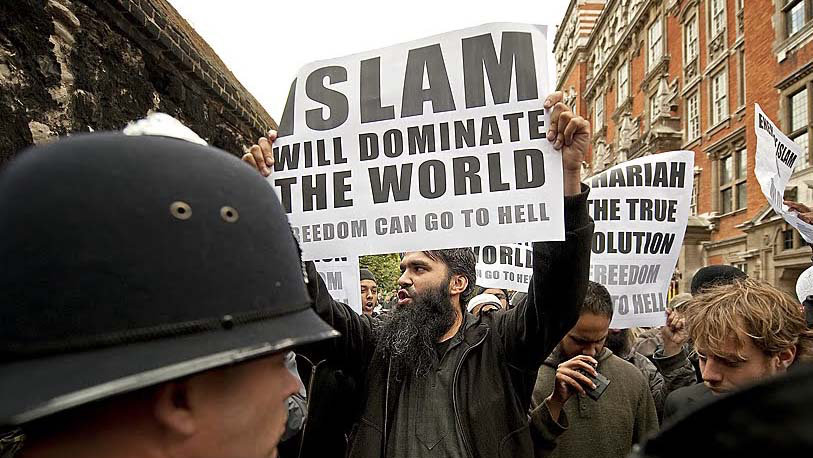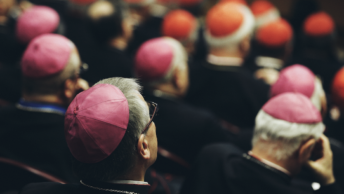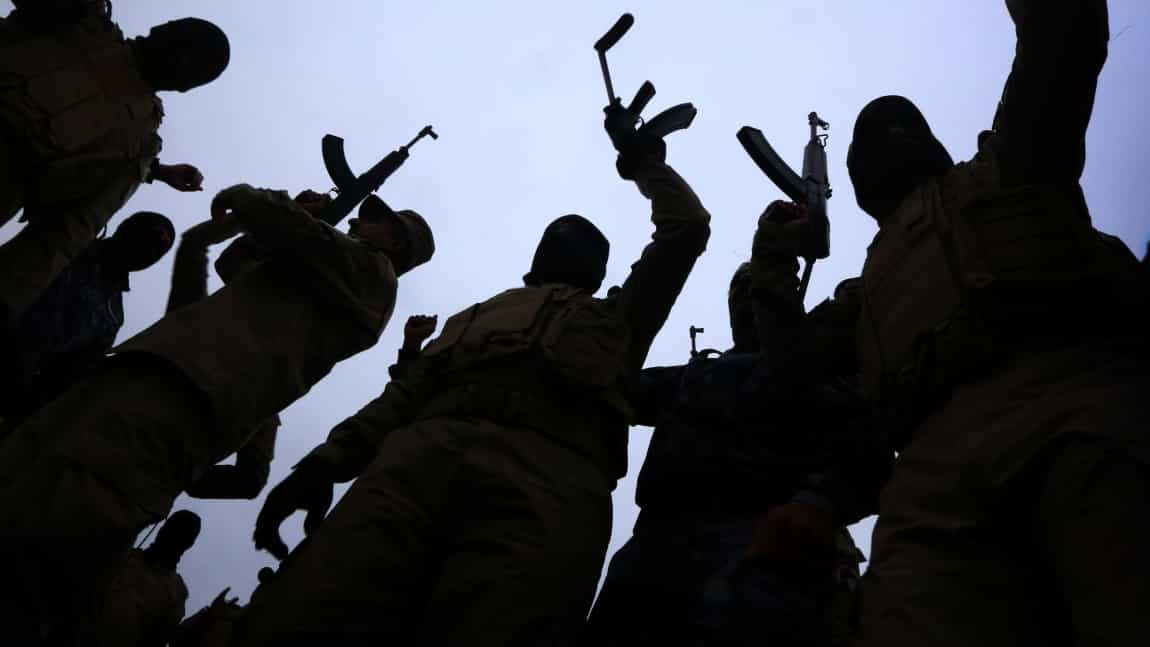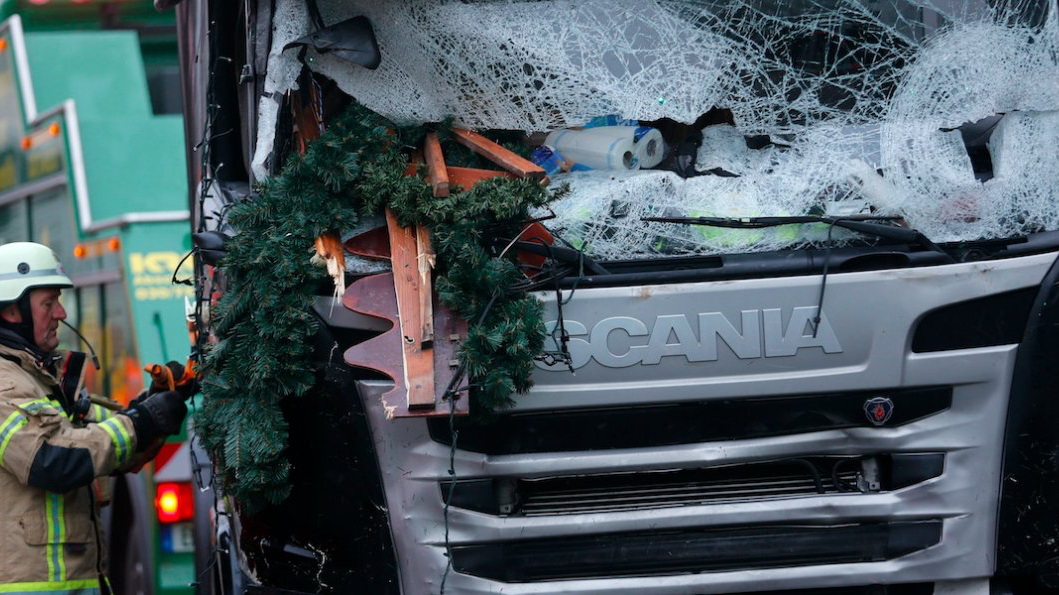Can you identify the source of the following quote?
Countering terrorism has become, beyond a doubt, the top national security priority for the United States . . . The catastrophic threat at this moment in history . . . is the threat imposed by Islamist terrorism . . . Islamist terrorist leaders draw on a long tradition of extreme intolerance within one stream of Islam . . . That stream is motivated by religion and does not distinguish politics from religion, thus distorting both . . . Islamist terrorists mean exactly what they say: to them America is the font of all evil, the “head of the snake,” and it must be converted or destroyed. It is not a position with which Americans can bargain or negotiate. With it there is no common ground–not even respect for life–on which to begin a dialogue. It can only be destroyed or utterly isolated.
As you were reading the quote, could you hear the voice of President Trump? I could. But these are not his words. Instead, they are the words of the 2004 911 Commission Report, which, of course, was the seminal document on the 2001 terrorist attack on the United States. The Report traced the history of terrorist attacks against this nation, the failures on the part of America’s security apparatus, and the steps necessary to prevent future terrorist attacks.
The carnage on 911 united the nation, regardless of the political or religious beliefs of its citizens. Changes were made in an attempt to safeguard Americans. We were all on the same page. The key word here is were.
Five years later, with the Obama administration in charge, terrorist attacks were categorized as “work-place violence” or the work of lone-wolf psychos aided by a lack of gun control. Radical Muslim organizations, such as CAIR and the Muslim Brotherhood, were regular visitors to the White House. Mr. Obama and his team refused to even utter the word Islamist in connection with terrorism.
This stubborn refusal to properly label the source of terrorism is shocking when compared to the Report. Except for the first sentence in the above quote, the rest of the paragraph is found under the subsection “Defining the Threat.” Apparently, the authors of the Report felt it was crucial to identify the threat in order to win the war on terror. Clearly, Mr. Obama felt he knew more than they.
Today, in light of the resistance of Democrats and rogue judges to any measures President Trump promotes to protect Americans, from extreme vetting to the building of a wall at the Mexican border, it might be worthwhile to re-visit the 911 Commission Report and its proposals to keep America safe from foreign terrorists.
The key recommendation dealt with terrorist travel: “The challenge for national security . . . is to prevent the very few people who may pose overwhelming risks from entering or remaining in the United States.” But how do we do that? The Report recognized that terrorists often use travel documents as “weapons” to gain entrance into the United States. To hide their backgrounds, they “use evasive methods, such as altered and counterfeit passports and visas . . . and immigration and identity fraud.” The Report then speculated that had American security officials done a more thorough job of analyzing travel documents on 911, perhaps 15 of the 19 hijackers could have been stopped at the point of entrance. In essence, the bar for admission to the United States was far too low.
So, what was the solution to keep America safe? The Report was unambiguous: “The challenge is to . . . develop a conceptual framework–an architecture–for an effective screening system.” But what about help identifying travelers from foreign countries? The Report made the following recommendation:
Exchanging terrorist information with other countries . . . will have immediate security benefits. . . The further away from our borders that screening occurs, the more security benefits we gain. At least some screening should occur before a passenger departs on a flight destined for the United States. We should also work with other countries to ensure effective inspection regimes at all airports.
Many countries have excellent databases that could prove helpful in filtering out potential terrorists. However, the Report admitted that getting help from some countries may involve difficult negotiations or that other nations may not have the technical capacity or the willingness to help with proper screening. The latter point is a real problem today.
All of this brings us back to the recent court decisions that have restrained both of President Trump’s executive orders to place a temporary ban on visitors and refugees from certain Mideast countries until proper screening (vetting) can be established. These court decisions have virtually ignored the language of the orders themselves but instead have used cherry-picked and partial quotes from Trump or his colleagues dating back back to 2011. The courts have thus concluded that Trump is simply a Muslim bigot, regardless of the wording of an executive order. In legal parlance, this is called a “forever taint.” In other words, Trump’s actions with regard to Muslims will always be suspect. With such fallacious and dangerous logic, the courts are saying that Trump can never act in any fashion against a Muslim-majority country.
So, we end up with this: President Trump is doing exactly what the 911 Commission Report recommended. He is clearly identifying the enemy and trying to assure proper vetting to prevent that enemy from harming Americans. But some rogue judges, cheered on by Democrats and the mainstream media, could care less about your security. If that makes you sleep less soundly, welcome to the club.
Those who cannot remember the past are condemned to repeat it —George Santayana









Would it be accurate to charge that the courts have based their recent opinions more on fear of the political consequences, policy ramifications, and/or possible legal precedents of President Trump’s executive orders than on the wording of the orders and their expressed purposes? Are these decisions not further evidence of judicial activism, where individual judges exceed their authority in our system of checks and balances? If so, then what are “we the people” to do about imbalance between the three branches? We rely on the higher courts to check the lower courts, which is to say the courts check themselves. But, ultimately, who checks the highest court? To whom do the U.S. Supreme Court Justices answer? In my opinion, they answer to know one, which is why appointing and approving Constitution-minded judicial nominees is so vitally important. The stakes are even higher than transient border security issues and event the protracted war on terrorism. The proper functioning of our republic is at stake.